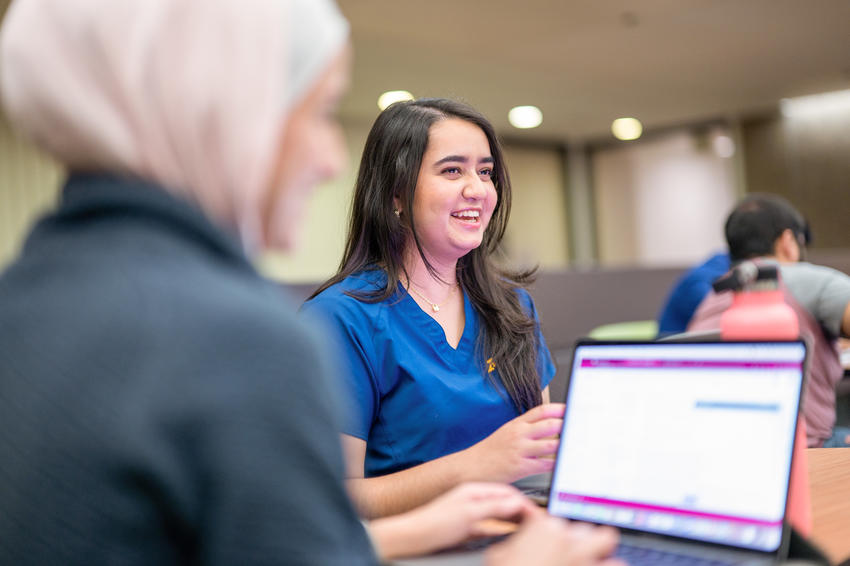Student success guide promotes holistic wellbeing and academic success

A School of Dentistry faculty member and staff member have joined forces to produce an all-in-one resource for learners across programs.
When the COVID-19 pandemic began, the Academic and Student Affairs team sought out ways of supporting students remotely, particularly those entering through a virtual orientation in fall 2020. “We wanted to have a collective place for new students to go for a variety of academic and wellbeing content,” explained Shannon Gilligan Wehr, senior student support associate.
Kristin Shingler, PhD, director of assessment and curricular integration, agreed. “There was so much talk during the transition to online learning about student burnout, supporting mental health and ensuring learning occurred, but none of it seemed connected,” she recalled. “We really wanted to highlight how holistic wellbeing and academic success were directly linked, and share resources for both pieces in one place.”
Together, Shingler and Wehr created the Guide for Success at the University of Minnesota School of Dentistry, an online guide hosted through Pressbooks that serves as a one-stop resource for academic and personal wellbeing and success. Originally aimed at incoming DDS, Dental Hygiene and Dental Therapy learners, the guide is now in its third version and includes resources and information relevant to all School of Dentistry students. Topics include how to succeed academically through study skills, learning objectives and more; mental, physical and financial wellbeing; ergonomics resources to protect physical health while caring for patients and a guide to other resources available through the University of Minnesota.
“The University of Minnesota is a large institution with a wealth of resources, which can often be hard to navigate or understand,” explained Wehr. “Even if students are introduced to a resource during orientation, they may not remember it exists when they could benefit from it. We wanted to find a way to list commonly-utilized resources in an easy-to-navigate location, along with context for how to use a resource and testimonials from School of Dentistry students.”
Wehr and Shingler placed high value on making the guide relevant to the student experience—so they sought input from current students and allowed their own experiences of working with students to shape its content.
“The transition to dental school can be challenging, and asking for help can feel daunting,” Shingler explained. “Developing the student support book allowed us to highlight that those feelings were common and valid, and that others were able to work through the transitions by utilizing the resources we shared and highlighted.”
Shingler and Wehr intentionally created a resource that would not be read cover-to-cover, encouraging readers to read the sections that were helpful to them at the time and simply take note of the others for later use. Shingler hosted a series of virtual events that paired with the content of the book and were later incorporated into relevant chapters. Course directors and instructors were encouraged to remind learners of the guide and promote its use, and the authors have even presented about the book at two conferences this year.
Shingler and Wehr are proud of the resource they have created, and hope it will help students feel supported and valued.
“I hope the book helps students realize that we truly value their academic success and wellbeing, and that we want to do what we can to support them holistically,” Wehr explained. “I don’t want them to feel alone in their struggles.”
Shingler agrees. “I see it as the first step in building a cultural framework where the entire learner is considered as they progress through school,” she explained. “Seeing and supporting our learners for their whole identity, rather than just the ‘student’ piece of their lives, is an integrative form of education that will hopefully serve these students well as they work toward their degree and successful careers.”
